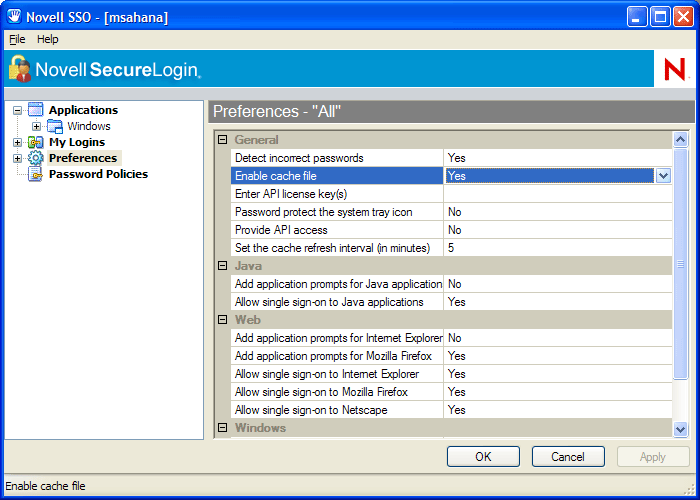5.8 Deploying
SecureLogin provides centralized management and deployment of user configuration via efficient leveraging of the directory structure and administration tools. In Microsoft ADAM, administrators manage users via the Administrative Management Utility accessed from the Windows Start menu.
5.8.1 Configuring User’s Environment
Configuring a user’s SecureLogin environment includes:
-
Setting Preferences
-
Creating Password Policies (Optional)
-
Enabling required applications on SecureLogin
-
Creating of Passsphrase questions for user selection (optional)
It is recommended that SecureLogin configuration is trailed on test user accounts prior to deployment. Comprehensive information on user configuration is provided in the administration guide.
SecureLogin provides a range of options for deployment and distribution of user configurations.
5.8.2 Managing SecureLogin in an ADAM Instance
SecureLogin users are managed in the Administrative Management Utility. For more information on SecureLogin administration, refer to the Novell SecureLogin 6.0.SP1 Administration Guide. The Administrative Management Utility is accessed via the Start menu. The Administrative Management Utility manages users at the container, organizational unit and user object levels.
-
Access SLManager.
-
Specify the distinguished name of the required object. For example, CN=users, dc=SecureLogin, dc=com.
-
The Administrative Management Utility is displayed.
5.8.3 Installing SecureLogin for Mobile Users and Notebooks
To install SecureLogin for mobile and remote users, follows the procedure found in Section 5.6, Installing SecureLogin in the ADAM Environment. However, it is important that you ensure the cache is saved locally, or users will be unable to access the applications when they are disconnected from the network. The Enable Cache file setting in the Preferences options of the SecureLogin is set to Yes by default. This option can be set either at the organizational unit level or on a per user basis.
